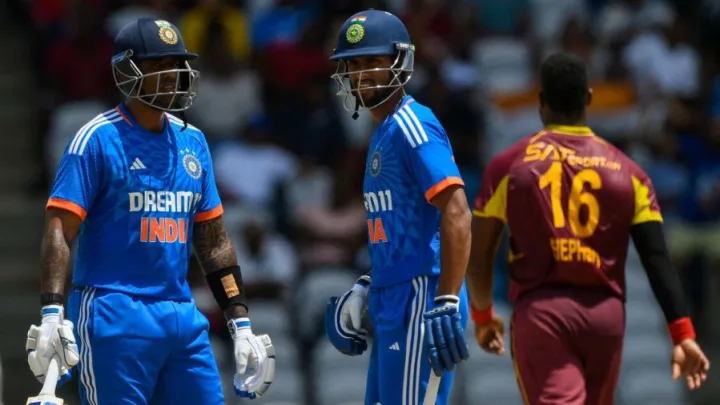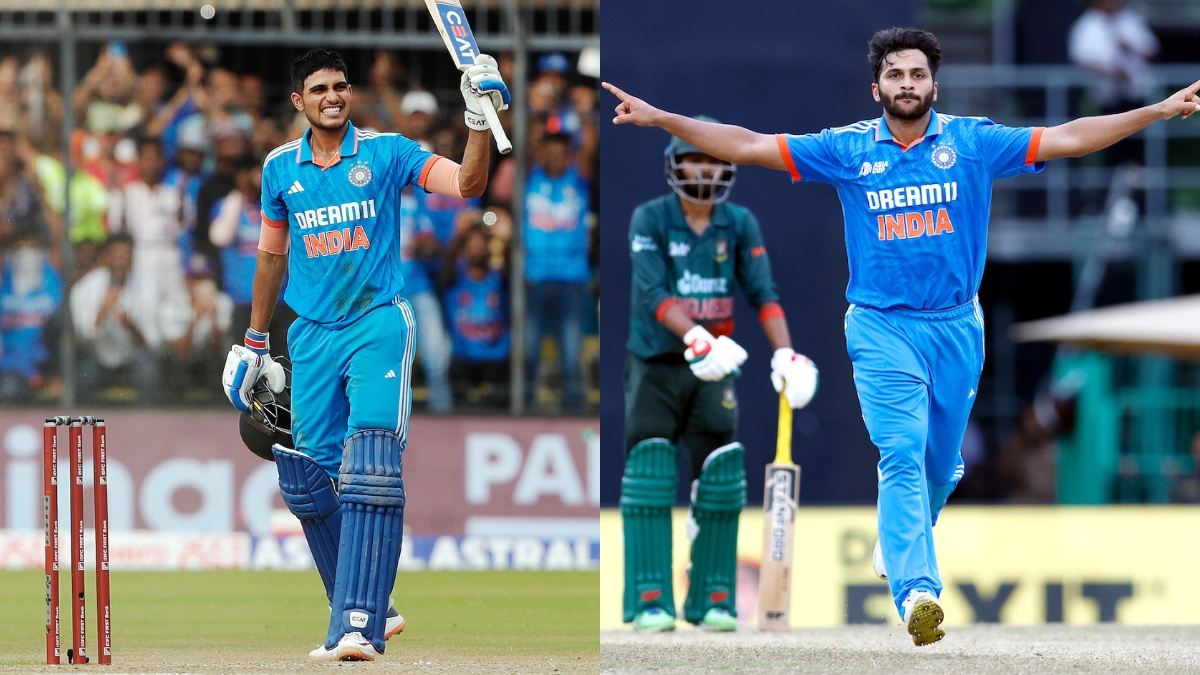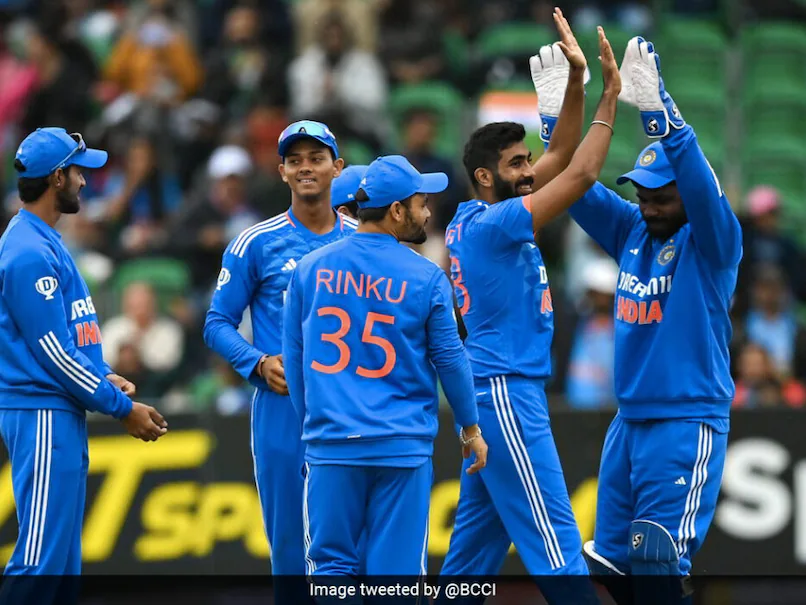How close are Shreyas Iyer and KL Rahul to full fitness and selection? Should India choose Tilak Varma for his strong T20I performance, or back Suryakumar Yadav despite weak ODI numbers?
Is Ishan Kishan a dual role player, backing up as a wicketkeeper and batter? Among Axar Patel, Shardul Thakur, and Yuzvendra Chahal, who misses out? What about Prasidh Krishna, returning after a year?
These are crucial questions for the selection committee, led by Ajit Agarkar, as they finalize India’s Asia Cup squad. Ideally, this squad sets the foundation for the 15 players picked for the World Cup, but India’s situation isn’t ideal. Two key players aren’t cleared, and two are making comebacks after a gap during the Ireland T20Is.
Considering these circumstances, the selectors may contemplate starting with a larger Asia Cup pool on August 30, and later narrowing it down for the World Cup squad, which they must announce by September 5.
In an ideal scenario, the top seven include Shubman Gill, Rohit Sharma, and Virat Kohli in the first three slots. Iyer and Rahul fill the fourth and fifth positions, followed by Hardik Pandya and Ravindra Jadeja.
However, the uncertainties around Iyer and Rahul complicate the selection. If Rahul doesn’t recover from his thigh injury, Kishan takes the primary wicketkeeping role. If Iyer isn’t fully fit following back surgery, the selectors need a middle-order backup.
A three-horse race in the middle order
Recently, Suryakumar and Sanju Samson were seen as contenders for the middle-order backup spot. However, a surprise entrant, Tilak, has emerged due to Suryakumar and Samson’s struggles to secure their positions in the 50-overs format.
In 26 ODIs, Suryakumar has scored 511 runs with a modest average of 24.33. He openly acknowledged this, saying, “To be honest with myself, my numbers in ODIs are quite poor,” recognizing it as a well-known fact.
“I need to be honest with myself, but it’s essential to improve,” emphasized Suryakumar, sharing advice from Rohit Sharma and Rahul Dravid. Given his limited ODI exposure, he’s focused on practice and figuring out how to contribute, particularly in the latter stages of innings.
Then there’s Samson, an enigmatic figure in white-ball cricket, capable of delivering breathtaking strokes from the outset but often grappling with inconsistency. In the two ODIs against West Indies, he scored 9 and 51. Although his half-century was impressive, maintaining the momentum set by the openers, his dismissal left a sense that he had missed an opportunity to capitalize. In the subsequent two T20I innings, he managed scores of 12 and 7.
Now, let’s talk about Tilak, a power-packed player. He brings the left-handed element that India lacks in their top five without Rishabh Pant. Although he hasn’t yet played ODIs, experienced minds in Indian cricket are excited about his potential in this format.
However, all this enthusiasm might be in vain if both Iyer and Rahul are available. This is because Kishan can serve as both the backup keeper and a reserve opener, making the competition between Suryakumar, Samson, and Tilak less significant when the primary choices are fit and prepared for play.
Siraj, Bumrah, Shami and who?
In the bowling department, Mohammed Siraj and Jasprit Bumrah are definite selections. Mohammed Shami leads the pack as the potential third seamer, and recent signs strongly support this choice. His workload management leading up to the World Cup aims to ensure that India won’t face shortages in case Bumrah or Siraj encounter any setbacks.
The selectors are likely to closely monitor Prasidh’s performance in Ireland as he makes his comeback from a lumbar spine injury. Since they expect to announce the Asia Cup squad before the first game on August 18, they might not have had the opportunity to observe him in a match environment. However, it’s clear that Prasidh brings a unique aspect to the team with his height and ability to hit the deck, making him an appealing option for the middle overs.
This role aligns with his pre-injury performance, as evidenced by his ODI record of 25 wickets in 14 matches at an average of 23.92. Additionally, Mukesh Kumar, who made his debuts across all formats during the Caribbean tour, has an outside chance, along with Jaydev Unadkat, who made a comeback to ODIs after more than a decade during the West Indies series, providing the team with a valuable left-arm angle.
The No. 8 dilemma
Kuldeep Yadav’s consistent performance during the West Indies ODIs appears to have elevated him to the top spot among the spinners, with Jadeja serving as the second option. This opportunity allows Shardul Thakur, Prasidh, Axar Patel, and Yuzvendra Chahal to contest for two positions.
Shardul contributes valuable batting strength at the No. 8 position in addition to his seam bowling skills. He has been in exceptional form recently, finishing the West Indies ODI series as the leading wicket-taker. However, if the playing conditions favor turning pitches and with India already having two seamers and Hardik, Axar can offer batting security lower down the order while also functioning as the third spinner. This could lead to the omission of Chahal, as indicated by his absence from the West Indies ODI matches.
Ultimately, this decision will hinge on whether the selectors opt to take a risk by including either Suryakumar or Tilak for the reserve batter’s position or choose to pick an additional specialized bowler such as Prasidh or Chahal. This possibility opens the door for India to potentially reunite the wrist-spin twins, Kul-Cha, in crucial games based on the prevailing conditions.
The missing offspinner
The only notable absence is a dedicated frontline offspinner. Among potential candidates, R Ashwin last played an ODI in January 2022, while Washington Sundar is in the process of recovery after multiple injuries sidelined him for much of the past year. Although he achieved limited success in the Deodhar and Duleep Trophy, he is preparing to make a comeback to the Indian squad for the Asian Games in China.
Whichever direction the selectors choose, there will be extensive discussions, as the composition of the Asia Cup squad offers insights into the structure of the World Cup team. After the Asia Cup, India has a schedule that includes playing three ODIs at home against Australia before the World Cup. Teams have until September 27, which coincides with the final India-Australia ODI, to make revisions to their initial World Cup 15.
The anticipated Asia Cup squad, assuming all players are available, includes Rohit Sharma (captain), Shubman Gill, Virat Kohli, Shreyas Iyer, KL Rahul (wicketkeeper), Suryakumar Yadav/Tilak Varma, Ishan Kishan (wicketkeeper), Hardik Pandya, Ravindra Jadeja, Shardul Thakur, Kuldeep Yadav, Mohammed Siraj, Jasprit Bumrah, Mohammed Shami, and a choice between Axar Patel, Yuzvendra Chahal, or Prasidh Krishna.



